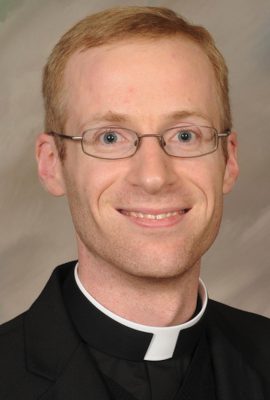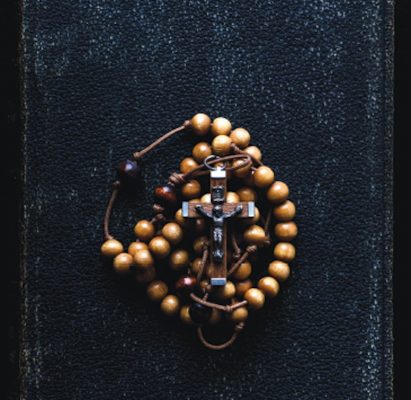While I was in Canada, the Area Catholic Communities were announced, and the ACC committees began to meet. Although, I could not tell what the final plans would be in any of the 29 ACCs, even some rudimentary, back-of-the-napkin math revealed that fewer priests meant fewer celebrations of Holy Mass in fewer places. What would be done, I wondered, with churches that only saw a celebration of Holy Mass once a month, if that frequently?

Demographic shifts, the growth of English as a uniformly common language, as well as improvements in infrastructure had rendered many church buildings unnecessary, especially in those sections of the diocese that were first settled by major Catholic (often German) immigration. Yet, some of the “superfluous” churches were also the most laden with history, even pre-dating the diocese. What should be done with such treasures of diocesan history while not endangering dwindling resources necessary to evangelize the present age?
It was an Anglican classmate, born in the UK, who actually responded to my musings as I pondered this aloud one day at the lunch table. She explained that they saw similar pressures in England. An eight-century-old pilgrim chapel in a particular parish was hard to maintain and too small to host a gathering of the entire parish.
So, the vicar gathered lay persons, especially those skilled in music, to lead Vespers (what we would call Evening Prayer of the Liturgy of the Hours or the Divine Office) a few times each week. Thus, the chapel stayed in use even though it rarely, if ever, saw an Anglican Mass.
 The idea rang true, and received a boost when I visited the Anglican Ordinariate parish in Ottawa, Annunciation of the Blessed Virgin Mary. Small, and consisting of only those former Anglicans who, after extensive catechesis, were willing to enter into full communion with the Catholic Church, the parish was very unified, very tightly knit, and thus very closed to outsiders. I asked one of the parishioners about how a parish that was so homogenous engaged in evangelization, and she replied that their parish had the gift of Anglican liturgical tradition, especially Vespers. Anyone, she pointed out, could pray the psalms, unlike at Mass when, for the sake of integrity, those who do not ascribe to all that the Catholic Church teaches, believes and professes cannot receive Holy Communion.
The idea rang true, and received a boost when I visited the Anglican Ordinariate parish in Ottawa, Annunciation of the Blessed Virgin Mary. Small, and consisting of only those former Anglicans who, after extensive catechesis, were willing to enter into full communion with the Catholic Church, the parish was very unified, very tightly knit, and thus very closed to outsiders. I asked one of the parishioners about how a parish that was so homogenous engaged in evangelization, and she replied that their parish had the gift of Anglican liturgical tradition, especially Vespers. Anyone, she pointed out, could pray the psalms, unlike at Mass when, for the sake of integrity, those who do not ascribe to all that the Catholic Church teaches, believes and professes cannot receive Holy Communion.
All this spurred me to look back to “Sacrosanctum concilium,” the Constitution on the Sacred Liturgy from the Second Vatican Council which, at paragraph 100 reads: “… the laity, too, are encouraged to recite the divine office, either with the priests, or among themselves, or even individually.” This wasn’t just a good idea from some conversations in Canada — it was called for by the Second Vatican Council!
[perfectpullquote align=”left” bordertop=”false” cite=”” link=”” color=”” class=”” size=””]…The laity are encouraged to recite the Divine Office with priests, among themselves or individually.[/perfectpullquote]Returning to Minnesota, I was appointed pastor of St. Mary Help of Christians Parish in St. Augusta, a parish that cares for a church building dating from 1873, 16 years before the Diocese of St. Cloud even existed. Monday through Friday, at St. Mary Help of Christians Church, at 4 p.m., I unlock the doors and invite any who wish to pray Evening Prayer with me.
Since I’ve begun, there has always been at least one to join me, usually a half-dozen, sometimes even a few more. The hope is that no matter what the ACC committee decides, whether St. Mary Help of Christians Church has a priest nearby or not, the parishioners can gather and pray the Liturgy of the Hours, the prayer of the Church, prayed daily by monks, nuns, deacons, priests, and even the pope!
Father Matthew Crane is the pastor of St. Mary Help of Christians Parish in St. Augusta. He also serves as adjutant judicial vicar for the St. Cloud Diocesan Tribunal.





















